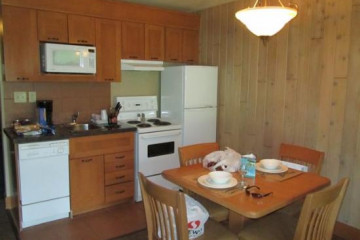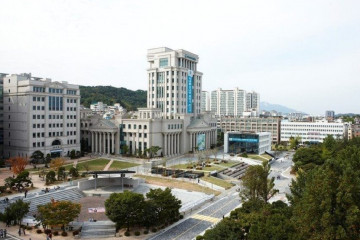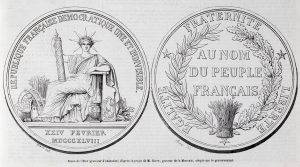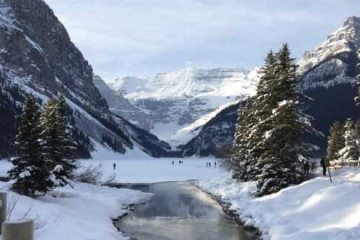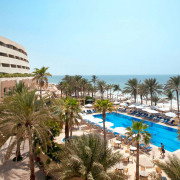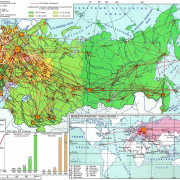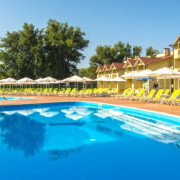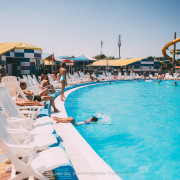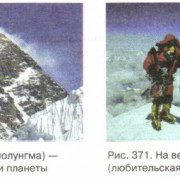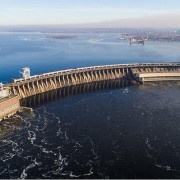Banff national park
Содержание:
See[edit][add listing]
There are several nature trails within half an hour of Banff township. These feature wildlife, waterfalls, lakes, rivers, and mountains. Banff is located at a high latitude and thus the scenery is four-seasonal; Banff looks completely different in the winter than it does in the summer.
- There are 2 Gondolas, Banff Gondola and Lake Louise Sightseeing Gondola.
- Sunshine Meadows, . For hikes amongst beautiful alpine meadows.
Interested in golfing? Teeing-off amongst the backdrop of dramatic mountain ranges, with local wildlife as your gallery, is an unequalled golfing experience. Banff National Park boasts one course at The Fairmont Banff Springs . Stanley Thompson, Canada’s master golf course architect, used his expert talent when he designed the original 18 holes in 1928. The course winds along the Bow River under the snow-capped peaks of Sulphur Mountain and Mount Rundle. In 1989, the course was complemented with the construction of an adjoining 9 holes, designed by Cornish and Robinson, resulting in 27 holes of championship layout.
Cave and Basin National Historic site, . See the birthplace of Canada’s National Park system. Where hot sulphur springs were found and the original bathhouse was built in 1887. There are also a couple of short nature trails.
Banff Park Museum National Historic site, . Come and see all the animals you missed on your trip to Banff. We even offer guaranteed bear sightings.
Canada Place, .Come in and learn about the history of Canada, our people, culture, and contributions to the world in this FREE interactive display.
Peyto Lake is a scenic location on the Icefields Parkway about 40 kilometers north of the town of Lake Louise. Access to the viewing area for this magnificent area is immediately off the parkway and is well signposted. Upon climbing the short distance to the viewing point you are greeted by what many consider to be one of the best views in Canada. The lake is located in a convergence of valleys surrounded by magestic mountains and rich forests. The lake system is fed from the Peyto Glacier to the left of the view point and this gives the lake a magnificent blue colour in the summer months due to the mineral content.

Visit the official site for Banff Lake Louise Tourism to find any activity you may be looking for whether it’s horseback riding, fishing, sightseeing, ATV adventures, white water rafting, kayaking, and canoeing. Banff National Park also offers a large variety of activities besides skiing/snowboarding in the winter. Try your hand at dogsledding, icefishing, ice skating, snowshoeing, cross-country skiing, ice climbing.
Биология ===
Экорегионы
=== Экорегионы
? национальном парке Банф представлены три климатических пояса:
Лесной горный пояс, Субальпийский пояс и Альпийский пояс.
Субальпийский пояс, который состоит в основном из густых лесов,
составляет 53 % от площади Банфа. 27 % парка находится
выше линии деревьев, в альпийском поясе. Линия деревьев в Банфе
находится примерно на высоте 2300 метров, с открытыми Лугами в
высокогорных районах и некоторыми районами, покрытыми ледниками.
Небольшая часть парка (3 %) расположена на высоте, в горных
Экорегионах. В горных регионах Банфа преобладают сосновые леса, а
также есть если, ивы, осины,
иногда встречаются пихты (), перемежающиеся с Клёнами. Ели ()
являются более распространенными в субальпийских регионах Банфа, в
некоторых районах присутствуют сосны, пихты (Abies lasiocarpa).
Горные районы, которые, как правило, являются наиболее
предпочтительным местом обитания диких животных, подвергаются
значительному изменению человеком на протяжении многих лет.
DSCN0030 — Wilson&Wes @ Flickr
Дикие животные
? парке присутствуют 56 описанных видов млекопитающих. Гризли и
чёрные медведи обитают в лесных регионах. Пума, Рысь, Росомаха,
Хорёк, Ласка, Североамериканская выдра и Волки являются основными
хищными млекопитающими. Лось,
Чернохвостый олень и Белохвостый олень широко распространены в
долинах парка, в том числе вокруг, а иногда и в городе Банфе, в то
время как лось, как правило, более незаметен, придерживаются в
первую очередь заболоченных территорий и ручьёв. В высокогорных
районах широко распространены: Снежная коза, Толсторог, Сурок
и Пищуха. Другие млекопитающие, такие как Бобр,
Дикобраз, Белка,
Бурундук являются наиболее часто встречаемыми мелкими
млекопитающими. В 2005 году в насчитали всего пять северных оленей,
что делает этот вид одним из самых редких млекопитающих в
парке.
Из-за суровых зим парк имеет мало рептилий и амфибий, были
выявлены лишь один вид жаб, три вида лягушек, саламандра одного
вида и два вида змей. По крайней мере 280 видов птиц может быть
найдено, в том числе Орлы
Белоголовый орлан и
Беркут, Канюк краснохвостый, Скопа, Сокол
и Дербник — все являются хищниками. Кроме того, часто видели
такие виды, как , , , , и коньки, которые обитают в не так высоко.
является основной птицей, которую часто видят в альпийском поясе.
Реки и озера населяют более сотни различных видов, в том числе
гагар, Цапель и крякв, которые проводят своё лето в парке.
Вымирающие виды в Банфе включают улитку (Physella johnsoni),
которая найдена в горячих источниках Банфа. Woodland caribou,
встречающийся в Банфе, записан как Исчезающий вид, как и медведи
гризли.
Жуки-короеды
?уки-короеды () вызвали ряд крупномасштабных заражение в
национальном парке Банф, съели флоэму зрелых сосен. Первая
известная вспышка заражения произошла в Альберте в 1940 году, было
заражено 43 квадратных километра леса в Банфе. Вторая крупная
вспышка произошла в конце 1970-х и начале 1980-х годов в Банфе и в
регионах, окружающих Скалистые горы.
Florian Fuchs @ WikiCommons
Biology
Ecoregions
Banff National Park spans three ecoregions, including montane, subalpine, and alpine. The subalpine ecoregion, which consists mainly of dense forest, comprises 53 percent of Banff’s area. Twenty-seven percent of the park is located above the tree line, in the alpine ecoregion. The tree line in Banff lies approximately at 7,544 ft., with open meadows at alpine regions and some areas covered by glaciers. A small portion (3 percent) of the park, located at lower elevations, is in the montane ecoregion. Lodgepole pine forests dominate the montane region of Banff, with Englemann spruce, willow, aspen, occasional Douglas-fir and a few Douglas maple interspersed. Englemann spruce are more common in the subalpine regions of Banff, with some areas of lodgepole pine, and subalpine fir. The montane areas, which tend to be the preferred habitat for wildlife, have been subjected to significant human development over the years.
Wildlife
Elk in Banff
Wildlife overpass
The Park has 56 recorded mammal species Grizzly and Black bears inhabit the forested regions. Cougar, Lynx, Wolverine, weasel, Northern River Otter and wolves are the primary predatory mammals. Elk, Mule Deer and White-tailed Deer are common in the valleys of the park, including around (and sometimes in) the Banff townsite, while Moose tend to be more elusive, sticking primarily to wetland areas and near streams. In the alpine regions, Mountain Goats, Bighorn Sheep, marmots and pika are widespread. Other mammals such as Beaver, Porcupine, squirrel, chipmunks are the more commonly observed smaller mammals. In 2005, a total of five caribou where counted, making this species one of the rarest mammals found in the park.
Due to the harsh winters, the park has few reptiles and amphibians with only one species of toad, three species of frog, one salamander species and two species of snakes that have been identified.
At least 280 species of birds can be found in Banff including Bald and Golden Eagles, Red-tailed Hawk, Osprey, Falcon and Merlin, all of which are predatory species. Additionally, commonly seen species such as the Gray Jay, American Three-toed Woodpecker, Mountain Bluebird, Clark’s Nutcracker, Mountain Chickadee and pipit are frequently found in the lower elevations. The White-tailed Ptarmigan is a ground bird that is often seen in the alpine zones. Rivers and lakes are frequented by over a hundred different species including loons, herons, and mallards who spend their summers in the park.
Endangered species in Banff include the Banff Springs Snail Physella johnsoni which is found in the Park’s hot springs. Woodland caribou, found in Banff, are listed as a threatened species, as are grizzly bears.
Mountain pine beetles have caused a number of large-scale infestations in Banff National Park, feeding off of the phloem of mature lodgepole pines. Alberta’s first known outbreak occurred in 1940, infecting 17 square miles of forest in Banff. A second major outbreak occurred in the late 1970s and early 1980s in Banff and the surrounding Rocky Mountains region.
Ecological concerns
Since the nineteenth century, humans have impacted Banff’s ecology through introduction of non-native species, controls on other species, and development in the Bow Valley, among other human activities. Bison once lived in the valleys of Banff, but were hunted by indigenous people and the last known bison was killed in 1858.
Elk are not indigenous to Banff, and were introduced in 1917 with 57 elk brought in from Yellowstone National Park. The introduction of elk to Banff, combined with controls on coyote and wolves by Parks Canada beginning in the 1930s, has caused an imbalance of the ecosystem. Other species that have been displaced from the Bow Valley include grizzly bears, cougars, lynx, wolverines, otter and moose.
Beginning in 1985, gray wolves were recolonizing areas in the Bow Valley. However, the wolf population has struggled, with 32 wolf deaths along the Trans-Canada Highway between 1987 and 2000, leaving only 31 wolves in the area.
The population of bull trout and other native species of fish in Banff’s lakes has also dwindled, with the introduction of non-native species including brook trout, and rainbow trout. Lake trout, Westslope cutthroat trout, Chiselmouth are also rare native species, while Chinook salmon, White sturgeon, Pacific lamprey, and Banff longnose dace are likely extinct locally. The Banff longnose dace, once only found in Banff, is now an extinct species.
История
Вид с вершины Серной горы на Банф и его окрестности.
Отель King Edward
Банф был впервые заселен в 1880-х годах, после того, как через долину Боу была построена трансконтинентальная железная дорога. В 1883 году трое рабочих Канадской Тихоокеанской железной дороги наткнулись на ряд природных горячих источников на склоне Серной горы . В 1885 году Канада создала федеральный заповедник площадью 26 км 2 (10 квадратных миль) вокруг горячих источников Пещера и Бассейн и начала продвигать этот район как международный курорт и спа как способ поддержки новой железной дороги. В 1887 году площадь заповедника была увеличена до 673 км 2 (260 квадратных миль) и названа «Парк Скалистых гор». Это было началом системы национальных парков Канады.
Этот район был назван Банфом в 1884 году Джорджем Стивеном , президентом Канадской Тихоокеанской железной дороги, вспоминая свое место рождения недалеко от Банфа , Шотландия . Компания Canadian Pacific построила ряд грандиозных отелей вдоль железнодорожной линии и рекламировала отель Banff Springs как международный туристический курорт.
Городской городок Банф был построен рядом с железнодорожным вокзалом как центр обслуживания туристов, посещающих парк. Он находился в ведении системы национальных парков правительства Канады до 1990 года, когда город Банф стал единственным объединенным муниципалитетом в пределах канадского национального парка.
Интернированных лагерь был создан в Банф и Замковой горы в Dominion Park с июля 1915 года по июль 1917 года узники лагеря для интернированных были использованы в качестве бесплатной рабочей силы для создания инфраструктуры национального парка.
В 1985 году Организация Объединенных Наций объявила национальный парк Банф одним из канадских парков Скалистых гор , объектом Всемирного наследия . Банф остается одним из самых популярных туристических направлений в Канаде.
Одной из самых заметных фигур Банфа был Норман Лакстон , известный как «мистер Банф». Он издал газету Crag and Canyon , построил отель King Edward и театр Lux, а также основал магазин Sign of the Goat Curio Shop, который привел к созданию Лукстонского музея равнинных индейцев, ныне Музея народов Буффало. Он и его семья помогли организовать дни индейцев в Банфе и зимний карнавал в Банфе.
В 1976 году рабочая группа Международного астрономического союза по номенклатуре планетных систем (IAU / WGPSN) официально приняла название Банф для кратера на Марсе в честь города в Альберте. Кратер находится на 17,7 ° северной широты и 30,8 ° западной долготы. Его диаметр составляет 5 км (3,1 мили).
В 1991 году Банф принимал Зимние Сурдлимпийские игры 1991 года , первые Сурдлимпийские игры, проведенные в Канаде , и единственные Сурдлимпийские игры, проводившиеся с тех пор в Канаде.
Bow Valley Parkway
Дым окутал долину реки Боу атмосферой мистичности и загадочности.
Особенно символично было проехать через место планового выжигания леса двадцатилетней давности.
Лесные пожары — это не так плохо как кажется, они нужны не только для оздоровления леса, избавления от непроходимых завалов и зарослей, но еще и способствуют формированию дождевых капель в облаках а дождь необходим для… правильно, ограничения распространения лесных пожаров.
Замкнутый цикл.
Castle Mountain
На самом деле, мы съехали на параллельный трансканадскому шоссе Bow Valley Parkway еще и потому что горы все равно затянуло дымом от лесных пожаров по всей провинции, а здесь хотя бы был небольшой шанс встретить диких животных.
Диких встретили много —полный каньон Джонстона, а вот с животными не повезло.
Все они сбежали далеко в горы по специальным мостам для их миграции через хайвей (прямо сейчас государство строит еще несколько), в чем не могу их винить — у меня такое желание возникало при виде каждого въезжающего на парковку автобуса, полного кита… туристов.
Впрочем, может оно и к лучшему — как известно, «туристы» — не лучшие водители. По крайней мере, с местами для пикника на этой второстепенной дороге не было проблем.
Johnston Canyon
Если вы приедете в разгар сезона на каньон в середине дня, то его очень трудно не заметить — так же трудно, как череду припаркованных у обочины посреди леса машин длиной в два километра. Сюда есть смысл вернуться вечером, когда три отдельных парковки понемногу начинают пустеть, но даже тогда здесь тьма народу.
Тропу здесь едва ли можно назвать тропой — скорое это длинный пешеходный мост, но без него было бы почти невозможно пройти пару километра прямо по каньону, тем более пяти миллионам туристов в год — уж точно никак.
Но хотя бы раз увидеть эти чудеса природы нужно обязательно, тем более что ничего не стоит, раз уже все равно здесь.
А потом с другими достопримечательностями дела обстоят еще хуже.
География
?ациональный парк Банф расположен на западе провинции Альберта,
на границе с Британской Колумбией. Банф расположен примерно в
полутора часах езды от
Калгари и в четырёх часах от
Эдмонтона. Национальный парк Джаспер расположен на севере,
национальный парк Yoho — на западе, а национальный парк
Kootenay — на юге от Банфа. Национальный парк Kananaskis
Country, который включает в себя парки Bow Valley Wildland
Provincial Park, Spray Valley Provincial Park и Peter Lougheed
Provincial Park, расположен к югу и к востоку от Банф.
Шоссе Транс-Канада проходит через весь парк Банф — от
восточной границы вблизи Canmore через города Банф и озеро Луиза и
далее в национальный парк Yoho в Британской Колумбии. Город Банф
является главным коммерческим центром в национальном парке. Деревня
около озера Луиза находится на пересечении шоссе Транс-Канада и
Icefields Parkway, которое уходит на север к городку Джаспер.
Город
Банф
Основная статья: Банф
(Альберта)
Город Банф, созданный в 1883 году, является главным коммерческим
центром в национальном парке Банф, а также центром для проведения
культурных мероприятий. Здесь расположено нескольких учреждений
культуры, в том числе Центр Банф, музеи Banff Centre, Whyte Museum,
Buffalo Nations Luxton Museum, Cave and Basin National Historic
Site, а также несколько художественных галерей. На протяжении своей
истории в Банф проводилось множество ежегодных мероприятий, в том
числе Индийские дни в Банфе, которые стартовали в 1889 году, а
также Банфский Зимний карнавал. С 1976 года Центр Банфа проводит
Горный кинофестиваль Банфа. В 1990 году город был включен в
муниципалитете Альберта в соответствии с законом о национальных
парках и в связи с планами федеральных властей по его развитию. По
результатам
переписи 2005 года город Банф имеет 8.352 проживающих, из
которых около 7.000 являются постоянными жителями. Река Боу
протекает через город Банф, водопад Боу Фоллс расположен на окраине
города.
Lake
Louise
ake Louise — небольшая деревня, расположенная в 54 км
к западу от города Банф, является достопримечательным местом,
Chateau Lake Louise на краю озера Луиза. Расположенное в 15 км
от озера Луизы, озеро Moraine представляет собой живописный пейзаж
в долине Десяти вершин. Этот пейзаж был изображён на обратной
стороне канадской банкноты $ 20, выпускавшейся в серии 1969—1979
годов («Пейзажи Канады»). Горнолыжный курорт Lake Louise Mountain
Resort находится недалеко от деревни.
Black Sickle @ WikiCommons
Icefields
Parkway
cefields Parkway простирается на 230 километров, соединяя Лейк
Луиз и Джаспер, Альберта. Parkway начинается около озера Луиза,
затем уходит к северу к долине Bow Valley, проходя рядом с озёрами
Hector Lake, Bow Lake и
Пейто. Parkway затем пересекает вершину и следует вдоль реки
Mistaya к Saskatchewan Crossing, где впадают реки Howse и Северный
Саскачеван (река).
Река Северный Саскачеван течет к востоку от Saskatchewan
Crossing, из Банфа в сторону района David Thompson и в Эдмонтон.
Шоссе David Thompson Highway следует вдоль реки Северный
Саскачеван, через созданное человеком озеро Abraham Lake и через
David Thompson Country. В Saskatchewan Crossing доступны основные
услуги: заправка бензином, кафе, магазин сувениров, небольшой
мотель.
Postcard — Len Langevin @ Flickr
К северу от Saskatchewan Crossing, шоссе Icefields Parkway
следует вдоль реки Северный Саскачеван вплоть до Columbia Icefield.
Шоссе пересекает национальный парк Джаспер через перевал Sunwapta
Pass на высоте 2.023 метров, и приводит в городок Джаспер.
Озеро Морейн
Рекомендовать место
8
Озеро Морейн (Lake Moraine) располагается в Национальном парке Банф, в 14 километрах за пределами деревни Лейк Луиз, Альберта в Канаде. Оно находится в долине Десяти Пиков, на высоте около 1885 метров. Площадь озера составляет около половины квадратного километра.
Озеро постоянно подпитывается ледником и достигает своего максимального наполнения с середины по конец июня. Когда оно полно, в нем отражаются разные оттенки синего из-за преломления света на неровном, каменистом дне озера.
Вокруг озера есть пешеходные тропы, которые иногда закрываются из-за медведей гризли.
Озеро обнаружил и дал ему название Уолтер Уилкокс в 1899 году. Позднее он вспоминал, что те 30 минут, в течение которых он любовался видом озера, были самыми счастливыми минутами его жизни.
Озеро Морейн и сейчас считается одним из красивейших озер мира, многие относят его к природным чудесам нашей планеты.
Get around[edit]
- By far the easiest way to get around is by vehicle. Vehicle rentals are available in Calgary, Banff and Lake Louise.
- It is also possible to cover the park on bicycle, but keep in mind the mountainous terrain will make this quite a workout. Bicycle rentals (town, road and mountain bikes) are also available with in Banff and Lake Louise, visit the Parks Canada information centre for both road and trail routes.
- Or rent a moped from Bactrax/Snowtips to explore the area around Banff!
GyPSy Guide provides the self-drive visitors with a guided tour. GyPSy Guide automatically plays audio commentary, depending on your location, and through the stereo of any vehicle as you tour through the National Parks and beyond. No buttons to push, it knows where you are!
Достопримечательности
- Озеро Луиз
Озеро Луиз расположено недалеко от одноименного населенного пункта Лейк Луиз (54 километра от паркового центра). Канадцы называют его «Изумрудным» за красивый зелено-бирюзовый цвет воды. А так свое имя это озеро получило в честь одной из дочерей королевы Виктории.
 Озеро Морейн
Озеро Морейн
Озеро Морейн
Озеро Морейн полюбил весь мир, о нем можете почитать в нашей статье — Ледниковое озеро Морейн в Канаде
Расположено оно в 15 километрах от озера Луиз. Здесь открывается знаменитый вид на озеро и долину Десяти пиков. Фотография, сделанная здесь, одно время попала на канадские 20-долларовые купюры.
Прогулки на лодке по сине-голубой воде – очень умиротворяющее занятие. Кроме того зимой здесь популярна подледная рыбалка. И даже катание на коньках, невероятно чудесно скользить по замершей голубой воде, похожей на зеркало в окружении белоснежных пиков.
Озеро Минневанка
Озеро Минневанка расположено практически рядом с городом Банф (в 13 километрах). Любители пеших прогулок смогут пройтись по тропе ведущей вокруг озера и полюбоваться пейзажами.
Также есть возможность пройти озеро на лодке. Это хорошее место для фотографов и любителей природы без следов цивилизации. Здесь обитают животные, которых можно встретить на тропе: лоси, медведи, олени, горные овцы.
 Водопад Боу
Водопад Боу
Водопад Боу
Еще одна интересная достопримечательность – водопад Боу на одноименной реке. Известность свою водопад Боу обрел благодаря фильму «Река, текущая вспять», в котором снималась Мерлин Монро. Высота его около 9 метров.
Музей Уайтов
Начинающие альпинисты перед восхождением на вершины местных гор просто обязаны посетить музей Уайтов. Здесь собрана уникальная коллекция фотографий, картин, документов посвященная Скалистым горам Канады.
Началось все с того что семейная пара Уайт переехали сюда в 30 году прошлого века. Они и начали собирать эту коллекцию, иллюстрирующую историю покорения этих гор. Музею принадлежит также дом Уайтов, который можно посетить.
See[edit][add listing]
There are several nature trails within half an hour of Banff township. These feature wildlife, waterfalls, lakes, rivers, and mountains. Banff is located at a high latitude and thus the scenery is four-seasonal; Banff looks completely different in the winter than it does in the summer.
- There are 2 Gondolas, Banff Gondola and Lake Louise Sightseeing Gondola.
- Sunshine Meadows, . For hikes amongst beautiful alpine meadows.
Interested in golfing? Teeing-off amongst the backdrop of dramatic mountain ranges, with local wildlife as your gallery, is an unequalled golfing experience. Banff National Park boasts one course at The Fairmont Banff Springs . Stanley Thompson, Canada’s master golf course architect, used his expert talent when he designed the original 18 holes in 1928. The course winds along the Bow River under the snow-capped peaks of Sulphur Mountain and Mount Rundle. In 1989, the course was complemented with the construction of an adjoining 9 holes, designed by Cornish and Robinson, resulting in 27 holes of championship layout.
Cave and Basin National Historic site, . See the birthplace of Canada’s National Park system. Where hot sulphur springs were found and the original bathhouse was built in 1887. There are also a couple of short nature trails.
Banff Park Museum National Historic site, . Come and see all the animals you missed on your trip to Banff. We even offer guaranteed bear sightings.
Canada Place, .Come in and learn about the history of Canada, our people, culture, and contributions to the world in this FREE interactive display.
Peyto Lake is a scenic location on the Icefields Parkway about 40 kilometers north of the town of Lake Louise. Access to the viewing area for this magnificent area is immediately off the parkway and is well signposted. Upon climbing the short distance to the viewing point you are greeted by what many consider to be one of the best views in Canada. The lake is located in a convergence of valleys surrounded by magestic mountains and rich forests. The lake system is fed from the Peyto Glacier to the left of the view point and this gives the lake a magnificent blue colour in the summer months due to the mineral content.

Visit the official site for Banff Lake Louise Tourism to find any activity you may be looking for whether it’s horseback riding, fishing, sightseeing, ATV adventures, white water rafting, kayaking, and canoeing. Banff National Park also offers a large variety of activities besides skiing/snowboarding in the winter. Try your hand at dogsledding, icefishing, ice skating, snowshoeing, cross-country skiing, ice climbing.
Sleep[edit]
Whether camping or looking for a high class hotel, Banff National Park has something to offer. Camping spots are found throughout the park. Camping outside of designated spots is illegal without a special backcountry permit.
There are many hotels and lodges and bed-and-breakfasts throughout Banff. Vacation rental apartments can also be found easily. Some resorts provide log-cabin rentals. RV parking is available very close to Banff township.
Campingedit
Parks Canada Campground Reservation Service, ☏ +1-514-335-4813, +1-866-787-6221 (TTY), toll-free: +1-877-737-3783. Banff National Park uses Parks Canada Campground Reservation Service for campsites within the park
Backcountryedit
Parks Canada, ☏ +1 403-762-1550, banff.vrc@pc.gc.ca. For registration if you are planning on camping in the backcountry.
Lake Louise
Lake Louise – Lake Louise is not a hard sell. One of the worlds most photographed glacial lakes; its turquoise blue waters and surrounding snow-capped peaks have amazed visitors since the 1890’s.
Lake Agnes Trail – The Lake Agnes Trail is one of the most hiked trails in the park, leading walkers past a wide silver lake, towards a quaint mountain teahouse.
Plain of Six Glaciers Trail – Take the 10km hike to Lake Louise, and experience glaciers, vaulting peaks, avalanche paths, wildlife and a mountain teahouse en route.
Moraine Lake – Not too far from Lake Louise, Moraine Lake is perhaps even more beautiful, with its bright turquoise waters providing strikingly beautiful photographic opportunities.
Park management
Banff National Park is managed by Parks Canada, under the National Parks Act which was passed in 1930. Over time, park management policies have increasingly emphasized environmental protection over development. In 1964, a policy statement was issued that reiterated ideals of conservation laid out in the 1930 act. With the controversial bid for the 1972 Winter Olympics, environmental groups became more influential, leading Parks Canada to withdraw its support for the bid. The 1979 Beaver Book was a major new policy, which emphasized conservation.
In 1988, the National Parks Act was amended, making the maintenance of ecological integrity the top priority. The amendment also paved the way for non-governmental organizations to challenge Parks Canada in court, for breaches in adhering to the act. In 1994, Parks Canada established revised «Guiding Principles and Operating Policies,» which included a mandate for the Banff-Bow Valley Study to draft management recommendations. As with other national parks, Banff is required to have a Park Management Plan. On a provincial level, the park area and the included communities (other than the Town of Banff which is an incorporated municipality) are administered by Alberta Municipal Affairs as Improvement District No. 9 (Banff).
Get in[edit]
Map of Banff NationalPark
By caredit
Highway 1 (Trans-Canada Highway) bisects the park east/west. Banff is about an hour and a half from Calgary Alberta and the same from Golden British Columbia. Other ways to enter the park by automobile include the Icefields Parkway from Jasper, Highway 11 from Rocky Mountain House and Red Deer Alberta, and Highway 93 from Radium Hot Springs and Cranbrook British Columbia.
By busedit
- provides regular scheduled coaches that serve Banff and Lake Louise, departing from Calgary and points in British Columbia.
- Another option is to book one of the many guided bus tours that visit the park. Most of these will depart from Calgary or Vancouver.
There are three airport shuttle providers from the Calgary Airport to Banff and Lake Louise:
- offers many shuttles daily or private charter shuttles if needed.
By trainedit
Explore the Canadian Rockies by rail. Day rail tours depart from Banff connecting to Vancouver.
Rocky Mountaineer Vacations, provides independent year round vacation packages to the most unique and scenic regions of Canada, including travel on the world acclaimed Rocky Mountaineer rail journey.
Between Mid-April and Mid-October, the two-day, all daylight Rocky Mountaineer travels between Vancouver or Whistler, British Columbia and the Rocky Mountain destinations of Jasper, Banff or Calgary Alberta. Guests relax in Redleaf or Goldleaf Service, enjoying onboard commentary and bi-regional cuisine as the awe-inspiring scenery passes by at a leisurely pace. For selected departure date in December, the festive Rocky Mountaineer travels through a winter wonderland where the mountain valleys are covered in a blanket of snow.
By airedit
The closest international airport is in Calgary. Vancouver International Airport is approximately 12 hours’ drive to the west. Springbank Airport (west of Calgary, towards Banff) is nearly 80 km from Banff. Springbank operates short charter flights with small aircraft. There is a heliport in Cochrane, 5 minutes drive east of the park boundary and a 15-minute drive from the town of Banff.
